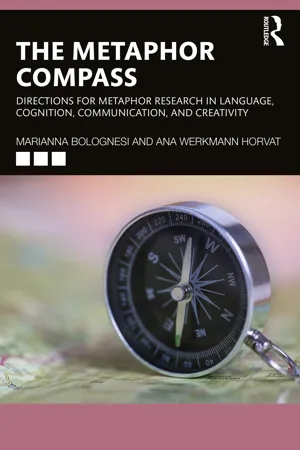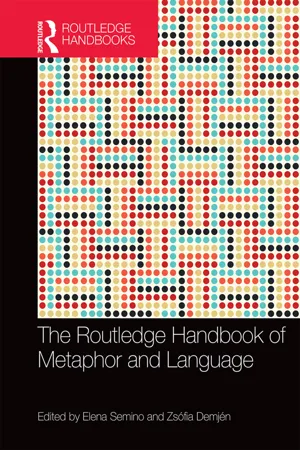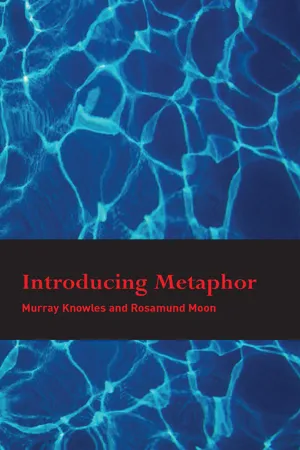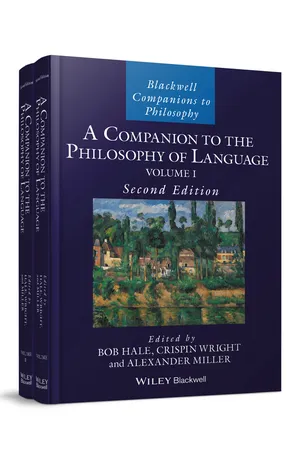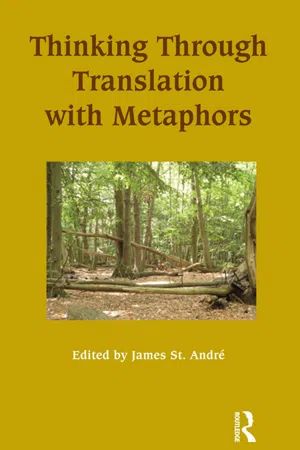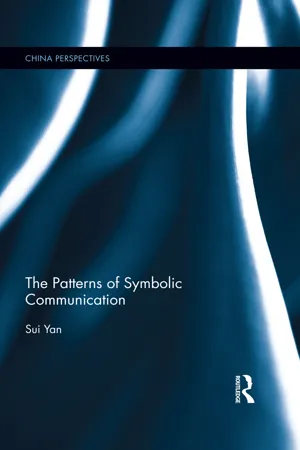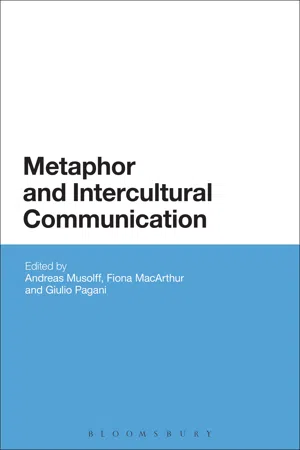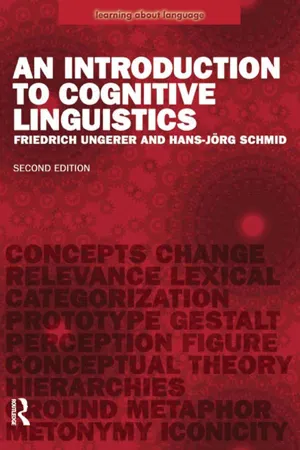Languages & Linguistics
Metaphor
A metaphor is a figure of speech that describes a subject by asserting that it is, on some point of comparison, the same as another otherwise unrelated object. It is used to make a comparison between two things that are not alike but do have something in common. Metaphors are widely used in literature and everyday language to create vivid imagery and convey complex ideas.
Written by Perlego with AI-assistance
Related key terms
10 Key excerpts on "Metaphor"
- eBook - ePub
The Metaphor Compass
Directions for Metaphor Research in Language, Cognition, Communication, and Creativity
- Marianna Bolognesi, Ana Werkmann Horvat(Authors)
- 2022(Publication Date)
- Routledge(Publisher)
What is transferred, or carried through, within a Metaphor, is meaning. Metaphors are ways to convey meaning. Because all words are ways to convey meaning, it should be specified how Metaphoric ways to convey meaning differ from non-Metaphoric ways. This is a hot topic of discussion among researchers. Theoretical views on this issue range between two very extreme positions, which can be summarized as follows: on one hand, it could be argued that every use of language is Metaphoric, because words stand for the meaning that they convey, thanks to relations that are strongly characterized by arbitrariness. In this perspective, when we use the word cat in a conversation to name an actual cat, we hope to evoke in our listeners’ minds a mental representation of the meaning of cat, which is not an actual cat, but rather something that stands for an actual cat. In this sense, one may argue that all language use is based on Metaphors, in the sense that all words trigger representations that stand for something out there, in the real world. This position is slightly problematic, because it seems to muddy the waters and prevent further investigation, by equating every type of language use to a Metaphor. On the opposite extreme of the spectrum, one could expect to find the position in which nothing is a Metaphor, and all language use is literal. To the best of our knowledge, such an extreme position has not been defended by any contemporary scholar. Nevertheless, there are theoretical accounts that emphasize the lexical, morphosyntactic, and semantic mechanisms of meaning construction, without addressing the specific phenomenon of Metaphoricity directly. For instance, in Relevance Theory (Sperber & Wilson, 1986) Metaphor is typically classified as a case of loose language use (on a continuum with approximations, category extensions, and hyperboles) - eBook - ePub
- Elena Semino, Zsófia Demjén, Elena Semino, Zsófia Demjén(Authors)
- 2016(Publication Date)
- Routledge(Publisher)
Introduction Metaphor and language Zsófia Demjén and Elena SeminoWhy a handbook of Metaphor and language?It is difficult to overstate the importance of Metaphor in human language(s), thought and experience. Over centuries of scholarship and a period of particularly intense focus in the last four decades, Metaphor has been defined, theorized and applied in many different and sometimes mutually incompatible ways. Nonetheless, a fairly broad consensus exists that Metaphor involves the perception of similarities or correspondences between unlike entities and processes, so that we can see, experience, think and communicate about one thing in terms of another – our lives as journeys, our minds as machines, our emotions as external forces, people as animals, inanimate objects as people, and so on. This expands our ability to feel, reason and communicate in ways that are characteristically human.Since at least classical antiquity – and particularly the work of Aristotle – there has been a steady interest in Metaphor from different perspectives, including rhetoric, philosophy, ethics, politics, philology, linguistics, literary and cultural criticism, psychology and cognitive science. These perspectives not only involved different questions, definitions and sources of evidence, but also generated debates about the status of Metaphor as something special or ordinary, good or bad, illuminating or obfuscating, and as separate from or connected with other aspects of language and thought. The debates intensified, and developed a particular focus in the late 1970s and early 1980s with the publication and subsequent influence of two books: Andrew Ortony’s edited collection Metaphor and Thought (1979, with a second edition in 1993) and George Lakoff and Mark Johnson’s Metaphors We Live By (1980, with a second edition in 2003). Both books focused on Metaphor primarily as a cognitive phenomenon, and presented it as central to thought. Lakoff and Johnson, in particular, famously introduced a theory that came to be known as Conceptual Metaphor Theory (CMT). Within this theory, Metaphor is first and foremost a matter of cognition. Much of our thinking, it is claimed, relies on conventional conceptual Metaphors – systematic sets of correspondences between, typically, concrete ‘source’ domains such as JOURNEY and abstract ‘target’ domains such as LIFE - eBook - ePub
- Rainer Guldin(Author)
- 2015(Publication Date)
- Routledge(Publisher)
Metaphors are also of great importance in theory change. Paradigmatic shifts go hand in hand with a radical transformation of the Metaphorical metalanguage of a specific scientific domain. Finally, Metaphors are essential to the transmission of scientific theory. Traditional Metaphors have a powerful influence on the ways in which a theoretical field is perceived. In the wake of a paradigmatic shift, new Metaphors can be used to convince others to adopt the consequences resulting from the theoretical change. Textbooks written for pedagogical purposes generally adopt these Metaphors after a new paradigm has been accepted (St. André 2010a: 5). Let me now turn to the definition of Metaphor in cognitive linguistics. 7 Lakoff and Johnson on Conceptual Metaphors George B. Lakoff, Professor of Linguistics at the University of California since 1972, and Marc Johnson, from the department of philosophy at the University of Oregon, radically redefined the field of Metaphor theory in cognitive terms. Cognitive linguistics defines linguistic phenomena as fundamentally conceptual in nature. Language and cognition mutually influence each other. Language is, furthermore, embodied and always situated within a specific environment. In Metaphors We Live By, Lakoff and Johnson define Metaphors as the very basis of everyday action and thought. “Metaphor is for most people a device of the poetic imagination and rhetorical flourish – a matter of extraordinary rather than ordinary language. Moreover, Metaphor is typically viewed as characteristic of language alone, a matter of words rather than thought and action … We have found, on the contrary, that Metaphor is pervasive in everyday life, not just in language but in thought and action. Our ordinary conceptual system, in terms of which we both think and act, is fundamentally Metaphorical in nature” (Lakoff and Johnson 2003: 3) - eBook - ePub
- Murray Knowles, Rosamund Moon(Authors)
- 2004(Publication Date)
- Routledge(Publisher)
6Metaphor ACROSS LANGUAGES
So far, we have been considering Metaphor and metonymy in relation to English. In this chapter, we will look at how they work crosslinguistically in other languages and cultures. This has practical importance in relation to language learning and translation, and is also significant in relation to more abstract issues of language, culture, and thought.FIGURATIVE AWARENESS
We have commented that in normal circumstances we are unaware of the figurativeness of conventional Metaphors and metonyms: we simply use them as we would ordinary non-figurative meanings or words. We have also commented that figurative competence in children develops over a period of several years: while very young children can only process literal meanings, children of ten or twelve can generally handle most Metaphorical usages in non-literary language. However, this applies to the acquisition of a first language, and not a foreign language. Foreign language learning typically begins at an age when we are already competent with Metaphor to a greater or lesser extent in our first language. Furthermore, in learning the vocabulary of another language, we may well notice that items are Metaphorical, even if the Metaphors are conventional: we may also analyse compound items, and think of their literal, compositional meanings. As our comprehension and production of the other language become automatic, this heightened figurative consciousness is likely to fade until it is no stronger than that of native speakers.For example, when first learning that the French word for ‘potato’ is pomme de terre , we may analyse it as ‘apple of the ground’ and think of it as some kind of Metaphor; similarly with German Eintopf - eBook - ePub
- Bob Hale, Crispin Wright, Alexander Miller, Bob Hale, Crispin Wright, Alexander Miller(Authors)
- 2017(Publication Date)
- Wiley-Blackwell(Publisher)
16 Metaphor RICHARD MORANMetaphor enters contemporary philosophical discussion from a variety of directions. Aside from its obvious importance in poetics, rhetoric, and aesthetics, it also figures in such fields as philosophy of mind (as in the question of the Metaphorical status of ordinary mental concepts), philosophy of science (as in the comparison of Metaphors and explanatory models), in epistemology (as in analogical reasoning), and in cognitive studies (as in the theory of concept‐formation). This chapter will concentrate on issues Metaphor raises for the philosophy of language, with the understanding that the issues in these various fields cannot be wholly isolated from each other. Metaphor is an issue for the philosophy of language not only for its own sake, as a linguistic phenomenon deserving of analysis and interpretation, but also for the light it sheds on non‐figurative language, the domain of the literal which is the normal preoccupation of the philosopher of language. A poor reason for this preoccupation would be the assumption that purely literal language is what most language use consists in, with Metaphor and the like sharing the relative infrequency and marginal status of songs or riddles. This would not be a good reason, not only because mere frequency is not a good guide to theoretical importance, but also because it is doubtful that the assumption is even true. In recent years, writers with very different concerns have pointed out that figurative language of one sort or another is a staple of the most common as well as the most specialized speech, as the brief list of directions of interest leading to Metaphor would suggest. A better reason for the philosopher’s concentration on the case of literal language would be the idea that the literal does occupy some privileged theoretical place in the understanding of language generally, because the comprehension of figurative language is itself dependent in specific ways on the literal understanding of the words used. This is at least a defensible claim and, if true, we might then hope for an understanding of figurative language from a theory of literal meaning, combined with an account of the ways in which the figurative both depends on and deviates from it. - eBook - ePub
- James St.Andre, James St.Andre(Authors)
- 2014(Publication Date)
- Routledge(Publisher)
In the 1980s, several scholars argued that the translation of Metaphors was a central issue in translation theory, with some going so far as to see it as the “epitome of all translation” (Newmark 1988:113). Although perhaps overemphatic, such statements reflect the great attention that the issue received in those years, in line with the full development of translation studies into an independent discipline and the “cultural turn” under way. By virtue of its interdisciplinary nature, the translation of Metaphors proved a fertile testing ground for the discipline, highlighting the need for a theory of translation to go beyond strictly linguistic approaches.Much of the interest and fascination that Metaphor has given rise to in translation theory is due to its borderline nature: some scholars have characterized it as being at the “limits of translatability” (Van den Broeck 1981:73), or again “at the frontier of linguistic change and fluidity [like] the problems of translating it” (Dagut 1976:23). Moreover, Metaphor and translation have several features in common, starting from their etymology: both terms mean in fact “carrying across”, respectively in Greek and Latin. This shared etymology spells out the deep similarity between the two activities, a similarity pointed out by several translation scholars: “Translation is primarily a Metaphorical operation in its bringing together of difference and … all Metaphor is fundamentally a translational operation”1 (Cronin 2005:23). Trying not to yield to what may appear as a game of Chinese boxes, in this essay I would like to address certain aspects of the complex and manifold relationship between Metaphor and translation, by analyzing the Metaphors used in the scholarly debate around Metaphor translation.2 To this purpose, a corpus of some fifteen contributions to Metaphor translation has been isolated: a corpus diverse in linguistic, methodological and historical terms.3 - eBook - ePub
- Sui Yan(Author)
- 2017(Publication Date)
- Routledge(Publisher)
Both Metaphor and metonymy belong to the realm of discourse strategy. Living in this beautiful world, we have become extremely thoughtful and emotional. We have too many people to please, too many things to describe, too many ideas to express, and too many tricks to peddle. Obviously, our vocabulary is too insufficient to help fulfill those tasks. The alarming traffic congestions on the highways of vocabulary often prevent us from effectively expressing our thoughts and feelings that keep gushing forth. Hence, our expressions are often rendered incoherent, ambiguous, and unintelligible. This forces us to contrive ways to load our limited number of words with as many meanings as possible so that we can maximize the expression of our rich feelings and thoughts. In the process, we have discovered Metaphor and metonymy as two mechanisms to extend the meanings of our words. Language, as a set of conventions, is static and constant, but discourse, as the application of language, is forever dynamic, inspired, and open, doing the best it can to describe and represent the world adequately. This has become possible because of the crucial role played by Metaphor and metonymy. Thus, it can be safely concluded that Metaphor and metonymy not only serve as two rhetorical devices but, more importantly, as two vital vehicles of human cognition and expression.As two fundamental ways of human perception and expression, Metaphor and metonymy have been employed not only in the use of language and in other systems of signs, but also been deeply embedded in human thinking and has been exerting a lasting impact on how people think. The way of thinking governed by Metaphor and metonymy is particularly effective in helping people concretize what is abstract. By enabling human beings to comprehend and experience what is yet unknown and abstract by means of what is already known and familiar, Metaphor and metonymy serve to shape people’s understanding of abstractions. Furthermore, Metaphor and metonymy are deeply entrenched in human culture. On the surface, Metaphor and metonymy are based on human experience; in actuality, they are based on the culture, history, and social reality. Therefore, Metaphor and metonymy are not to be judged good or evil in themselves as they are the products of culture, history, and social reality. Don’t we agree that those vulgar and overly abused Metaphors and metonymies and those soul-dominating super-Metaphors are equally legitimate reflections of the cultural landscape, social reality, and historical circumstances?4.5 Connotation and metalanguage: equivalences between Metaphor and metonymy as two discourse paradigms
Metaphor and metonymy are two ways of human cognition. The mechanisms underlying their construction can help reveal how messages convey meaning. According to Roman Jakobson’s theorizing on the principle of equivalence, both Metaphor and metonymy are a form of equivalence, and it is with the help of this equivalence that connotation and metalanguage are constructed. - eBook - ePub
- Andreas Musolff, Fiona MacArthur, Giulio Pagani, Andreas Musolff, Fiona MacArthur, Giulio Pagani(Authors)
- 2014(Publication Date)
- Bloomsbury Academic(Publisher)
TARGET model of the German functionalists and other communication models implicit in different cognitive approaches).Specialized language has its own Metaphoric expressions; learning to use them is part of the process of integration into the group of specialists that results from formal learning (Cameron, 2003, p. 112). Moreover, learning to use linguistic Metaphors in a specialist field may also mean learning to establish the corresponding conceptual mappings and as a result adopting a particular point of view. For example, adopting the linguistic terminology of the functionalist approach (‘skopos’, ‘goal-oriented’) increases the probability that the translation process will be conceived of as a road to a specific destination so that, as a result, greater importance will be given to the end-purpose of the translation and to the pragmatic, social and cultural aspects of communication (Martín de León, 2008, 2010).Musolff (2004, p. 70) highlights two factors that may be vital for the ‘survival’ of a Metaphor over time: ‘1) experiential grounding, which ensures that an essential meaning consistency is preserved, and 2) sufficient conceptual flexibility that allows for use in differing or even contrasting scenarios’. In our study of the ‘micro-history’ of the TRANSFER Metaphor, the coincidence of both factors could explain students’ difficulties in distancing themselves from the Metaphor, even when explicit information is provided to demonstrate its inadequacy for the analysis of the complexity of the translation and communication processes. The basic experience of transporting objects provides a simple explanation for a complex process by which ‘ideas are sent to others’ just like an ‘object’ or an audible or written ‘message’ can be sent to them (in this case a metonymic shift is produced between different meanings of ‘message’ which are increasingly abstract [Martín de León, 2004; Reddy, 1993]). Moreover, the TRANSFER Metaphor has sufficient conceptual flexibility to adapt itself to different situations, such as a combination with the CHANGE - eBook - ePub
- Friedrich Ungerer, Hans-Jorg Schmid(Authors)
- 2013(Publication Date)
- Routledge(Publisher)
What is transferred, then, by a Metaphor is not only the properties inherent in the individual concepts, but the structure, the internal relations or the logic of a whole cognitive model. Using a Metaphor originating in cartography later taken over by mathematicians, cognitive linguists have called the transfer a ‘mapping’ from a source to a target. This means that from a cognitive perspective a Metaphor is a mapping of the structure of a source model onto a target model. As the distinction between concept and cognitive model is often vague, we will use the more neutral terms ‘source concept’ and ‘target concept’ in what follows. * Let us look at another example to illustrate this conception of Metaphor (Lakoff and Turner 1989: 1ff). The human life cycle is conventionally conceptualized as starting with arriving in the world, going through life and leaving or departing at the time of one’s death. This means that we think of our life in terms of three journeys: when we are born we arrive from our first journey, our entire life is the second journey in the world, and when we die we set out on our last journey. The first and the last journeys are reflected in language by Metaphorical expressions such as the baby is on the way, the baby has arrived, we bring babies into the world, and he is still with us, they brought him back, he is gone, he has departed, he has passed away - eBook - ePub
Cognition and Second Language Acquisition
Studies on pre-school, primary school and secondary school children
- Thorsten Piske, Anja Steinlen, Thorsten Piske, Anja Steinlen(Authors)
- 2022(Publication Date)
- Narr Francke Attempto Verlag(Publisher)
Metaphor is the most common tool in scientific knowledge construction (Brown, 2003; Goschler, 2007; Jäkel, 2003): To facilitate understanding, the research object (e.g. processes in the brain) is conceived of in terms of another domain of human experience (e.g. conflict conflict and competition between humans). Just as any other form of human knowledge production, psychometric research into bilingualism bilingualism and cognition is socially situated, because the selection and interpretation of scientific Metaphors emerges from cultural and disciplinary traditions, as well as researchers’ experience in ever-changing historical situations. Especially when Metaphor awareness is hardly developed and Metaphors are taken literally, the Metaphorical nature of scientific models can easily lead researchers astray because of unjustified entailments derived from them. We will discuss these issues on the basis of some recent developments within the “bilingual advantage” debate. Following the ideal of the “native” speaker, this line of research has mostly focused on cognitive differences between monolinguals and bilinguals, the last being defined as speakers who acquired two languages from early childhood and are equally skilled in both of them. In recent years, however, some researchers have begun to highlight the gradual nature of bilingual competences, and to acknowledge that there are many ways of becoming bilingual even later in life. As a consequence, more and more studies have included L2 learners into psychometric experiments, trying to determine whether they show differences in cognitive performance in comparison with monolinguals and/or “native” bilinguals. This new focus on how different kinds of bilingualism bilingualism affect cognitive functioning has forced researchers to place more emphasis on LAL
Index pages curate the most relevant extracts from our library of academic textbooks. They’ve been created using an in-house natural language model (NLM), each adding context and meaning to key research topics.
